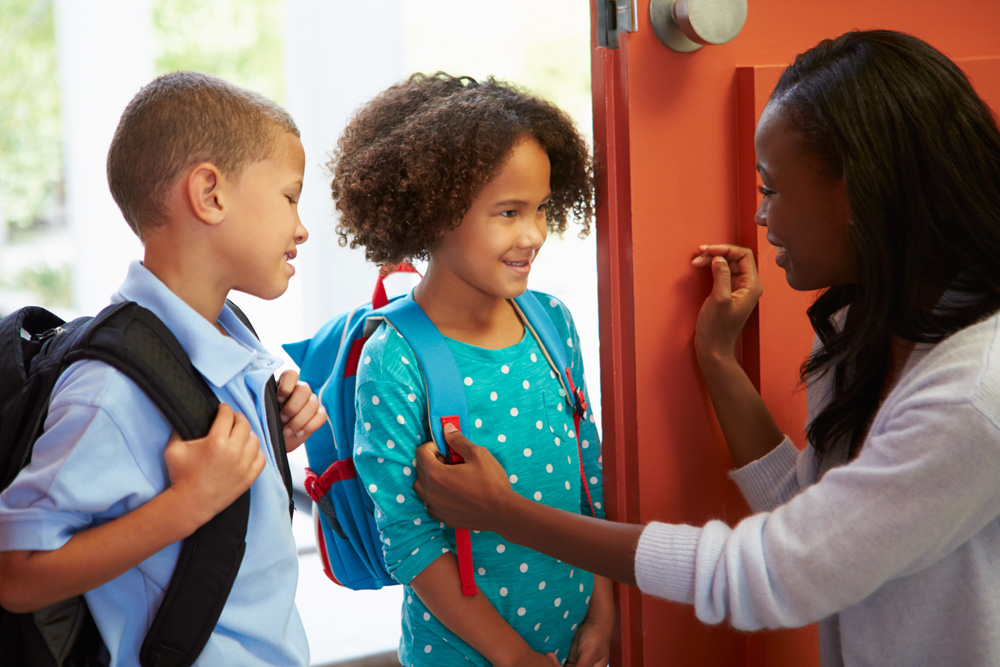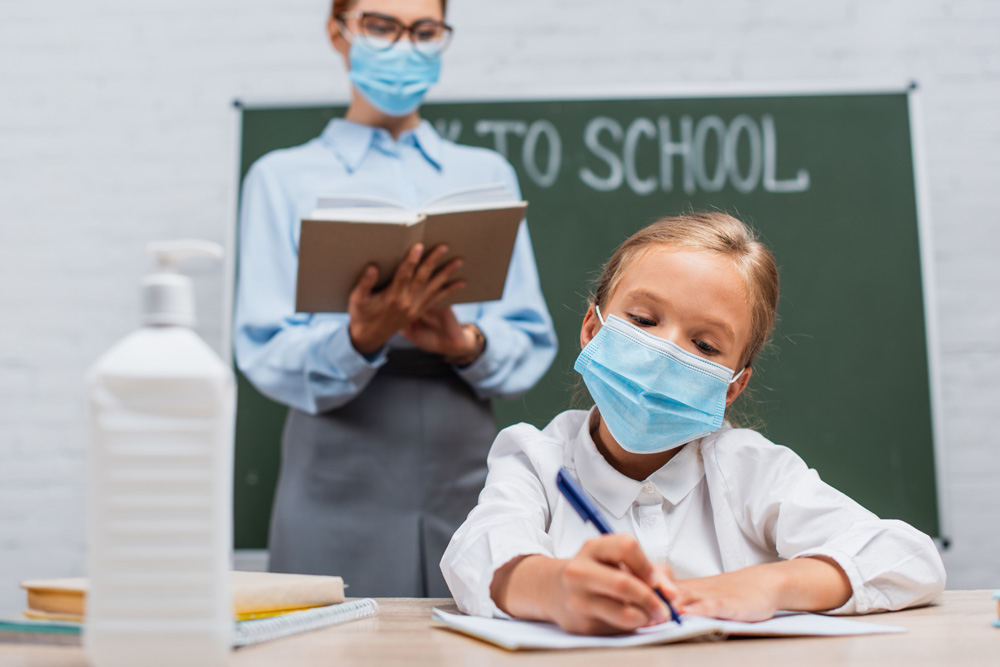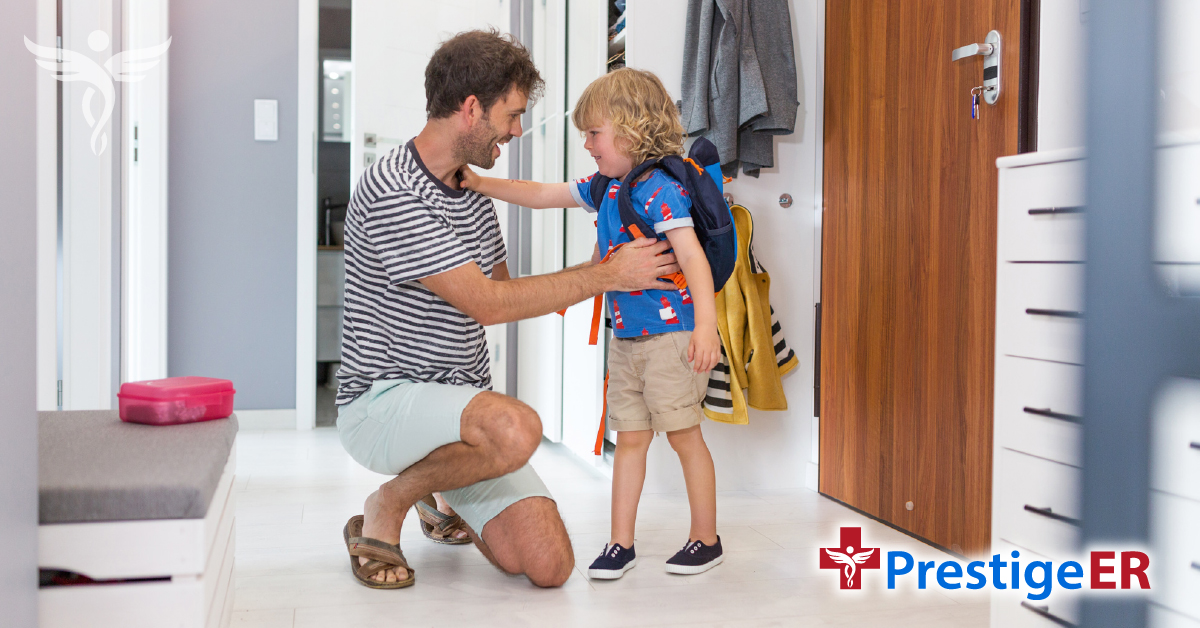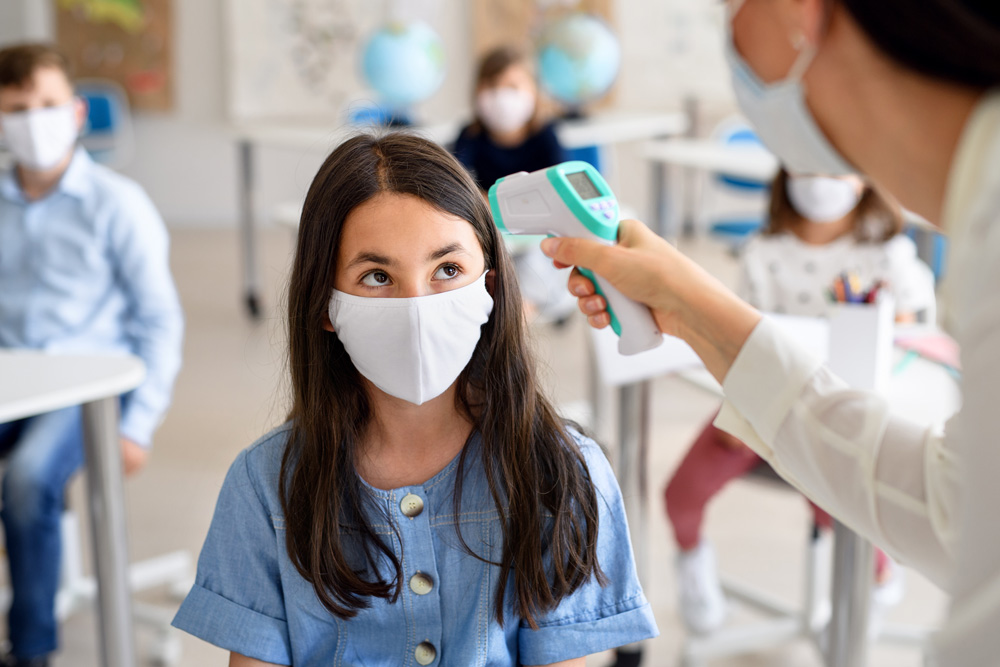The New Normal & Going Back to School
The new school year is here. The stress associated with getting kids ready for school again is getting redefined as parents and teachers try to figure out what the best strategy to bring children back into the classroom is.
The COVID-19 pandemic means we must adjust to a new normal while doing our best to keep our kids safe.
How to Determine Whether or Not to Send Your Child to School?
The decision to send your children back into the classroom is a profoundly personal one. There are many things to consider, including your child’s risk factors and those of your family.
As parents, you need to consider the options; these questions can help bring some clarity in this very confusing time.

At what rate is the virus spreading in my community?
How fast or aggressively COVID-19 is spreading in your community is perhaps the most important factor to determine how safe your children will be at school.
Schools within hotspots won’t be able to remain coronavirus-free despite everyone’s best efforts.
If your children go to school in an area with a low infection rate, then with proper protocols in place, it is relatively safe for them to return to school.
What is My Family’s Health Risk?
Researchers have stated that the most significant risk of children returning to school is their potential to spread the disease to more vulnerable populations.
Therefore, consider if your child or someone in your household has an underlying health issue that puts them at a higher risk of getting infected and developing complications, it may not be safe for them to return to the classroom.
The Centers for Disease Control and Prevention lists the known conditions that increase the risk of severe illness from coronavirus.
What Procedures Has the School Put in Place to Protect my Child?
CDC guidelines for reopening and operating schools during COVID-19 include the following considerations:
- Promoting behaviors such as hand washing and social distancing that reduce COVID-19’s spread
- Maintaining healthy environments. These should include cleaning and disinfecting procedures, as well as maintaining proper ventilation and air quality
- Upholding healthy operations. These considerations include providing options for staff and students at higher risk for severe illness. As well as providing inclusive programs for children with special healthcare needs and disabilities
- Creating and implementing plans for when someone gets sick. Ask school officials for how they plan to inform parents when someone at the school is sick. When and how will they decide to shut the school down

It’s a good idea to get the school’s protocols in writing.
If you are still struggling to decide on whether it’s safe for your children to return to school, download the CDC’s Interactive Decision-Making Tool.
How to Keep Your Child Safe at School
Safety should start at home. These tips and recommendations can help keep your child safe while at school.
- Take their temperature before they go to school. If they have a slight fever, it’s better to have them stay at home
- Pack their lunch. If you can, it’s better to pack your child’s lunch in a brown bag and have them eat it at their desk instead of the cafeteria. Make sure you provide them with healthy meals and snacks that include fruits and vegetables that can help boost their immune system
- When possible, avoid sending them to school by bus. Buses may not be conducive to proper physical distancing guidelines, therefore if you can walk or drive your kids to school.
- Practice hand washing at home. Teach children the importance of washing their hands before they leave the house, once they arrive at school, before going into the cafeteria, and after lunch or going to the bathroom
- Buy them a mask. Invest in a washable cloth face mask that expresses your child’s personality so they will want to wear it
- Have your kids shower when they return from school. A nice shower and a change of clothes can help eliminate any virus or bacteria they may have encountered at school
What to Do if Your Child Gets Sick With COVID-19
The most common symptoms of COVID-19 include fever, dry cough, and trouble breathing. Other symptoms include:
- Runny nose
- Chills
- muscle aches and pain
- Headache
- A loss of taste or smell
- Nausea or vomiting
- Diarrhea
- Fatigue
Some children develop a condition called multisystem inflammatory syndrome in children (MIS-C) that is related to inflammation throughout their bodies.
Symptoms of MIS-C can include:
- Fever
- A rash
- Feeling very tired
- Abdominal pain
- Vomiting or diarrhea
- Neck pain
- Swollen hands or feet
- Swollen lymph nodes
- Red eyes
- Red, cracked lips
If your child suffers from any of these symptoms or you suspect they may have COVID-19, you should come to Prestige ER immediately. Call us or use our online check-in form so our staff can prepare and be ready to meet you at the door.

Prestige ER is the best option for all your pediatric emergency needs. We have specialized pediatric examining rooms, physicians, and nurses at your disposal. Our advanced technology helps us diagnose conditions and injuries quicker so we can help your child feel better and go home faster.

